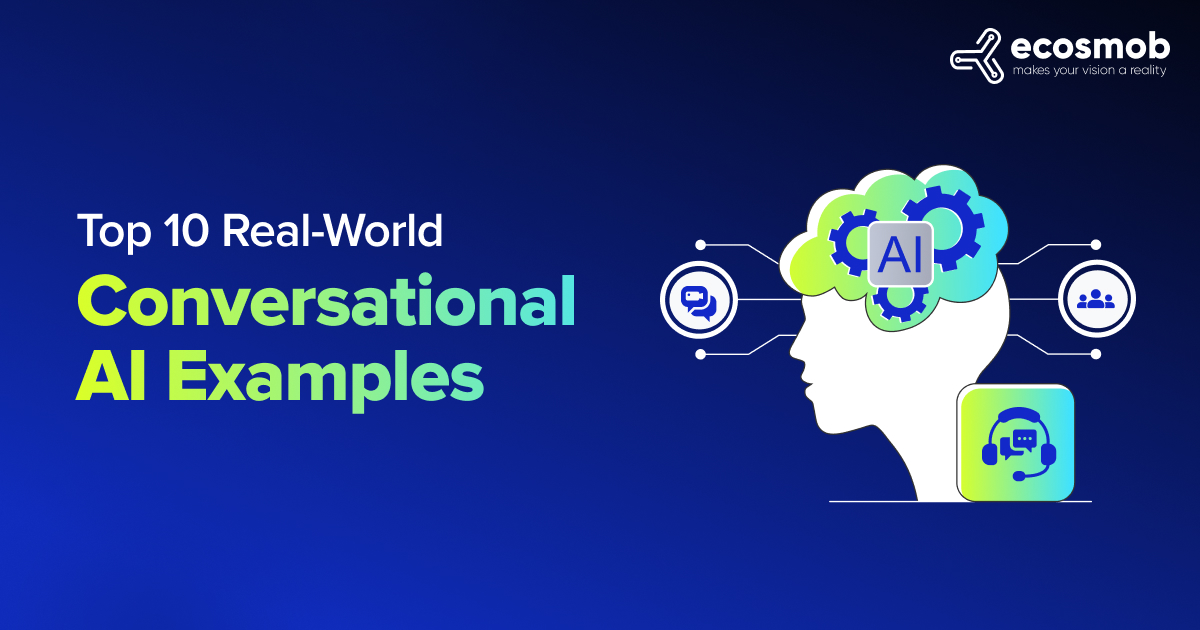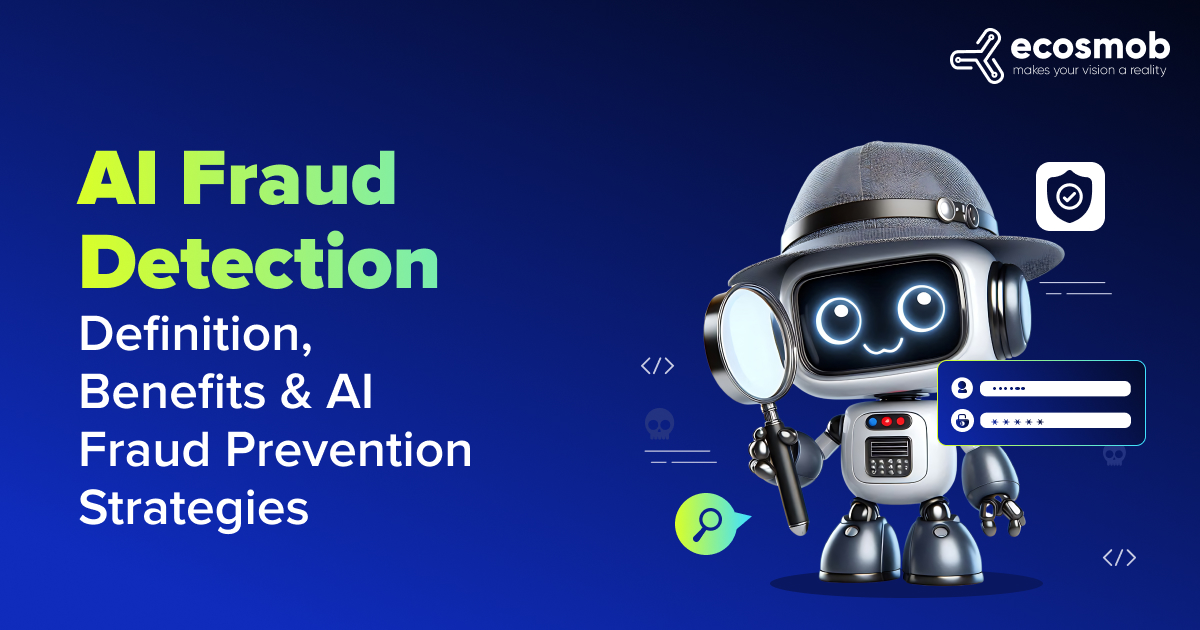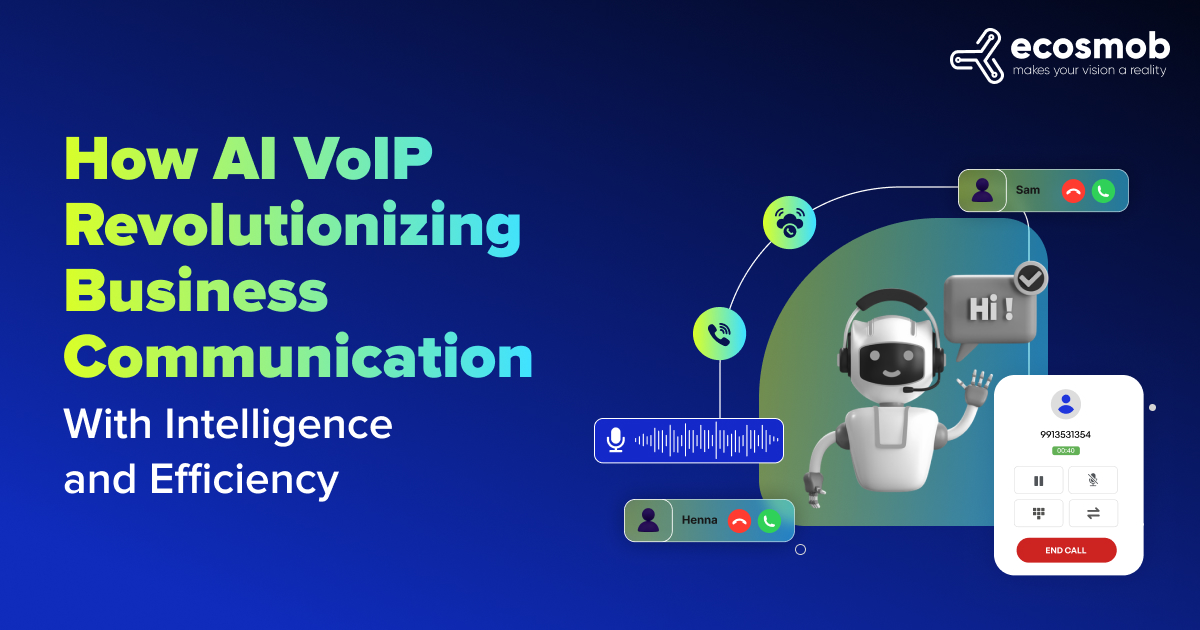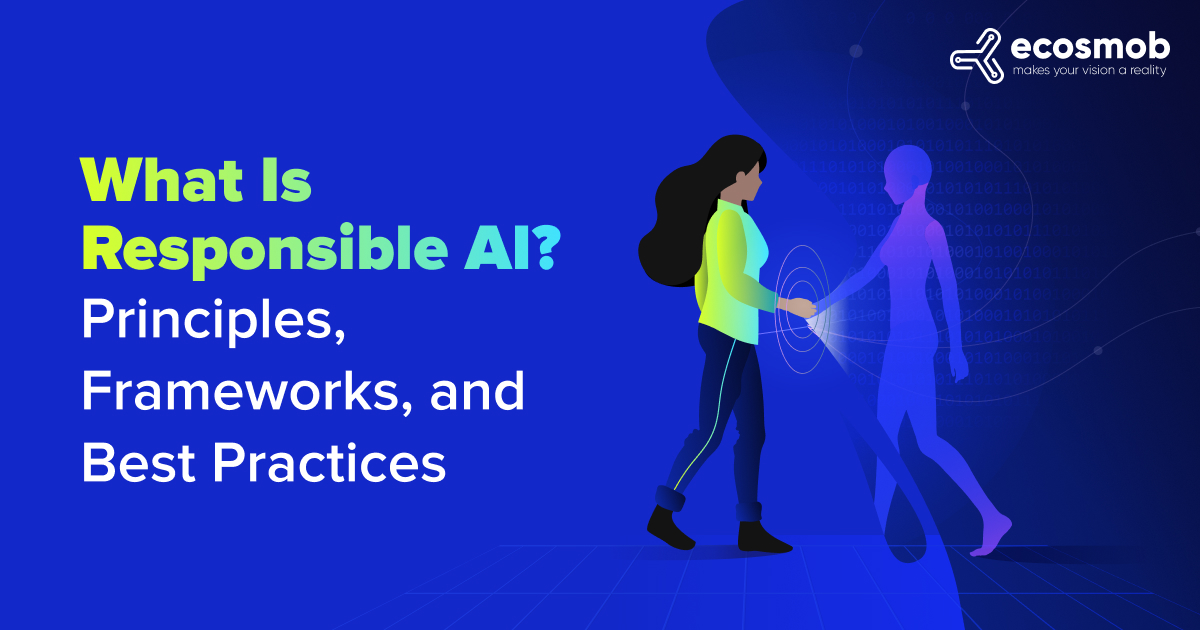Artificial Intelligence and Machine Language are the most significant game-changer technologies of the century. AI and ML technology trends show a paradigm shift in space exploration, medicine, science and technology, businesses, and human lives.
You may have read numerous articles on Top AI and Machine Learning trends. But we promise you will get some fresh perspectives to consider and deepen concepts that others didn’t even know about it or have only briefly explored. To help you seize this opportunity to the fullest, Ecosmob presents a detailed guide on the latest trends in AI and Machine learning.
Let’s go ahead and get started.
Artificial Intelligence is transforming productivity and the global economy’s GDP potential. It has become more prevalent through AI and Machine Learning trends, like Generative AI, Emotional AI, Explainable AI, Natural language processing(NLP), Deep learning, TinyML, and more.
According to Statista’s report, the market is expected to grow annually (CAGR 2024-2030) by 28.46%, resulting in a market volume of whooping USD 826.70 billion by 2030!
Let’s discuss AI, in detail!
What is Artificial Intelligence?
“AI is a mirror, reflecting not only our intellect but our values and fears too.” – Ravi Narayan
Artificial Intelligence is a field that combines robust data and computer science to enable problem-solving. It creates a system that can stimulate human Intelligence and make judgments on their own. Furthermore, machine learning and deep learning are the subfields of AI. According to the famous computer scientist John McCarthy, who coined the term Artificial Intelligence, AI is the blend of science and engineering of making intelligent machines or, precisely, intelligent computer programs.
For instance, most confluent AI applications result from face recognition technology, sentiment analysis, chatboxes, intelligent robots, autonomous vehicles, and voice command features. Evolution in the wearable industry is mainly due to artificial intelligence. Your smartwatches, smart glasses, and many other wearables are AI-enabled devices. You can check out some incredible Wearable Technology Trends selling like a hot cake this year. Even high-end applications like Siri, Alexa, and Cortana are examples of AI-enabled technology.
Historically, Artificial Intelligence came from an idea of ” a machine that thinks” in ancient Greece. Eventually, it then evolved more religiously after the advent of electronic computing. Since then, it has continuously set key milestones with its advancements.
What is Machine Learning?
Machine Learning is a subfield of artificial intelligence. It uses algorithms to analyze, process, and identify data patterns to make accurate predictions. Just like practice makes a man perfect, more data and experience make machine learning more accurate.
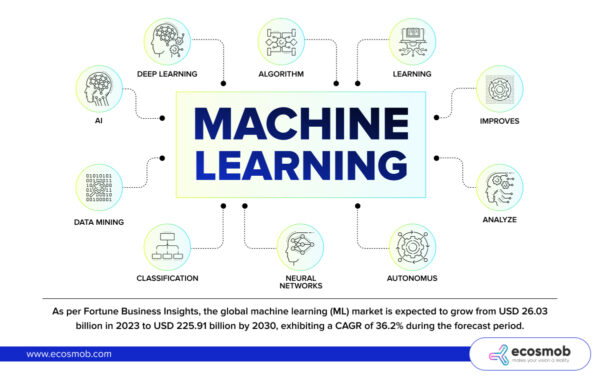
It is a breakthrough technology that efficiently imitates how humans process a large amount of data. This is why experts believe that ML is the backbone of human-like communications.
As per Fortune Business Insights, the global machine learning (ML) market is expected to grow from USD 26.03 billion in 2023 to USD 225.91 billion by 2030, exhibiting a CAGR of 36.2% during the forecast period.
The future of machine learning is quite promising for all industries and investors.
Machine Learning gave birth to Deep Learning, a more advanced version of ML and one of the latest AI emerging technology.
Latest AI & ML Trends
Here are the top emerging trends in artificial intelligence and machine learning that touch our lives directly or indirectly. These are some of the most influential trends that are here to stay.
1. AI-powered automation through Deep Learning
You must have heard of or used these services in this digital age – voice-enabled TV remotes, digital assistants, credit fraud detection, and self-driving cars. The technology behind all these products and services is Deep Learning.
You must be wondering,
What is Deep Learning?
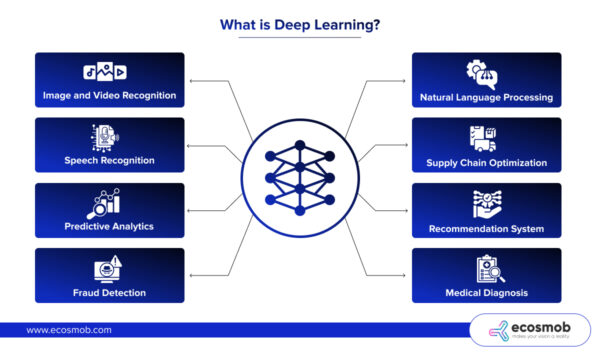
Deep learning is a technology where machines mimic the human brain. Technically, it is a subset of machine learning, as the above image shows. Deep learning aims to deliver hyper-personalized content.
It uses its neural network, which consists of three or more layers. These layers process unstructured data, perform data mining and pattern recognition across massive datasets, and offer refined results.
Deep learning allows machines to handle specific tasks by analyzing the inputs independently, without any command or being programmed.
In the last decade, the search interest in deep learning has grown to 2,933%. Unarguably, it is one of the greatest artificial intelligence revolutions.
It has enormous use cases that stretch across all industries. Some of the critical use cases of deep learning-
- Self-driving cars
- Voice Assistants- Google Assistant, Alexa, and Siri
- Image Recognition
- Influencer Software for Marketing
- Predictive Advertising
2. Sentiment Analysis with Emotional AI
I know reading sentiments was never easy!
Emotional AI is a technology that detects, interprets, and accordingly responds to human emotions or sentiments. It aims to understand the user’s emotional state by recognizing indications of facial expressions, voice tone pitch, heartbeat rate, and behavior patterns.
With machine learning and previous data analytics, emotional AI interprets indications and provides personalized responses that enhance user experience and smoothen interactions.
Thanks to Emotional AI, a deeper understanding of users’ sentiments allows businesses and companies to understand non-verbal feedback, work on improvement areas, and offer tailored solutions fostering brand loyalty.
To further understand the deep learning aspect, many are now turning to courses on machine learning online. These digital courses provide useful information that can help to better utilize this emerging technology.
3. Building Intelligent Connections with AI Ecosystem
A complex network of tools, data sources, analytics, platforms, and people who work together to create support and optimize artificial intelligence systems. The AI ecosystem includes machine learning algorithms, generative AI algorithms, data structures, Application programming interfaces (APIs), and other AI frameworks. The ecosystem allows seamless innovations for sectors like healthcare, finance, retail, and manufacturing by providing tools that help in continuous improvement and enhancement.
4. Enhanced Generative AI and Content Creation – ChatGPT and DALL- E 3
What is generative AI?
One of the most trending technologies that has taken the world by storm is generative AI. This technology creates new ideas and content, such as text, images, and more, based on commands provided to it.
The two trendy key technologies of Generative AI are OpenAI language models—ChatGPT and DALL-E 3. Even though artificial intelligence (AI) has been around for some time, technologies like OpenAI’s ChatGPT have allowed web users to experience “real” AI applications for the first time on a consumer level.
What is OpenAI?
OpenAI is an AI research and deployment company founded by Sam Altman, Elon Musk, and others. Its mission is to develop friendly AI and ensure that Artificial General Intelligence (AGI) benefits humanity. Today, OpenAI claims it produces roughly 4.5 billion words daily and facilitates more than 300 apps developers use to generate content.
The two most popular tech tools that were on the top this year –
ChatGPT
Want to write a creative essay with the right keywords or translate a letter you received into your preferred language? ChatGPT is here to help!
ChatGPT (Generative Pre-trained Transformer 3) is a prototype dialogue-based AI chatbot. It uses Deep learning to understand, evaluate, and produce human-like text. It is based on Language Learning Models (LLM) from the company’s GPT 4 series and is currently available in the beta version for all users. One of its standout features is creating custom GPTs, allowing users to tailor the AI’s responses to specific needs and contexts.
ChatGPT can give a single line or a full-page answer, much like an essay or case study, and everything in between! You can expect ChatGPT to write daily emails, code, case studies, to-do guides, articles, or even school essays soon. It functions as a one-on-one tutor who can address any issue.
No wonder how it reached 1 million users a week after launch!
As humans make mistakes, AI can sometimes make mistakes, too. However, with the RLHF, Reinforcement Learning from the Human Feedback model, ChatGPT fine-tunes its data and processing.
DAll .E 3
DAll .E 3 is currently the most famous name in digital art. It is a language model like ChatGPT. While the first version was DALL .E, launched in January 2021, the newest version, launched in November 2023, DALL.E 3, is more capable and accurate. The only difference is that DALL .E 3 produces pictures instead of text. You must enter a text or description, and DALL .E 3 exhibits greater adaptability, offering users a broader palette of visual styles.
Simply put, with DALL .E 3, you can turn your wildest imagination into art. With its accurate and realistic approach, this trending text-to-art platform is astonishing for people.
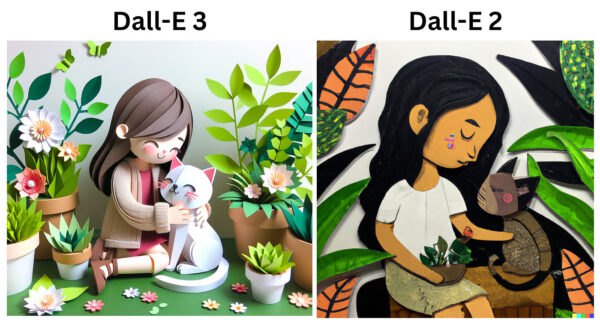
(Source – Medium)
So the above picture shows that innovations are beautiful, too!
5. Natural Language Processing (NLP)
Text wraps the world of the internet. Earlier, computers used to understand this text by translating it into 0 and 1. But now, with AI and ML, the machine can read and understand this text (or content) naturally. The technology behind this evolution is Natural language processing (NLP).
NLP is an interdisciplinary computer science, linguistics, and artificial intelligence subfield.
It provides the capability of understanding, analyzing, formatting, translating content, and extracting insights from it.
Some of the most relatable use cases of NLP are-
Text and Speech Processing-
- Text-to-speech
- Speech recognition
- Speech segmentation
- Word segmentation (Tokenization)
- Syntactic analysis
Higher-level NLP applications like–
- Automatic summarization
- Question answering
- Text-to-image generation
- Text-to-video
OCR – Optical character recognition
Grammatical Error Correction: Tools like Grammarly are the most common examples of applications using NLP to improve content quality and grammar.
6. Tiny ML
TinyML is the intersection of embedded IoT devices and machine learning. IoT devices can analyze the data while saving energy and computational resources. TinyML also defines the algorithm operating on an IoT system’s embedded or edge devices.
The most common example of tinyML is our smartphones’ and home appliances’ “wake” feature. For instance, essential speech and gesture instructions sound like a gunshot or a baby wailing.
Microcontrollers that drive automobiles, refrigerators, and utility metering systems are some examples of TinyML.
Over the past few decades, the size of ML algorithms has been growing due to the advent of big data and better processor speed. However, TinyML was saved from this time-consuming process. It is one of the fastest emerging machine learning trends transforming numerous segments of the economy.
7. AI Ethics and Regulations
The confluence of AI and ML generates more advanced data, offering endless potential applications. AI, an Emerging technology in artificial intelligence, is valuable because it can make our lives easier in numerous ways.
However, with every technological boon, there also come loopholes to the lookout. In the case of emerging trends in artificial intelligence and ML, such issues are – unethical means such as warfare, illegal acts, breach of privacy, fraud, and terrorism. One recent example is Deepfake. It is an AI-based technology that forges a person’s identity by replacing the actual face with a false face identity from an image or video – episodes like Deepfake tweak the need for AI technology regularization.
A study by Gartner predicts that by 2025, AI regulations will compel businesses to prioritize AI ethics, privacy, and transparency. This step will tame the enterprise strategies.
The EU AI Act, like the EU’s General Data Protection Regulation (GDPR) in 2018, might become a global norm in the years to come, defining how much AI positively affects people’s lives.
Other popular acts to regularize AI are-
The rise in these latest acts of AI technology regularization indicates that companies self-policing AI/ML projects (or not policing at all) are over.
8. Self Evolving AI
As the name suggests, self-evolving AI refers to artificial intelligence systems that adapt and enhance their algorithms over time without any human intervention. This type of AI uses feedback loops to evaluate its performance activities and vulnerabilities and develop algorithms to work on areas of improvement.
Self-evolving AI aims to simulate a form of self-directed learning and optimization, allowing it to continually get better at specific tasks, discover new patterns, or adapt to changes in its environment. Examples include recommendation engines that adjust to user preferences over time or predictive systems that refine their algorithms as they collect new information.
To Sum Up
Soon, trends in AI and machine learning will penetrate all sectors and continue to touch your life more closely.
Staying current with emerging artificial intelligence and machine learning trends is crucial. This will help you shape your business according to new trends and demands. We offer customized AI solutions, including Face recognition, sentiment analysis, predictive analysis, chatboxes, and more.
These trends are dynamic. Therefore, we suggest you visit this page regularly. It will help you stay updated and plan your business.
Transform Your Business: AI-Enabled Custom Solutions Today!
FAQs
What are the current AI and mL trends?
Critical trends in AI and ML include generative AI, AI-driven automation, predictive analytics, AI-powered cybersecurity, natural language processing, and emotional and explainable AI.
What is the future scope of AI and Machine Learning?
AI and machine learning are transforming industries and businesses, making systems more intelligent and adaptive through advancements in automation, natural language processing, and personalized user experiences.
How can AI and ML improve customer service in telecom?
AI and Machine learning trends can enhance customer service by implementing chatbots into their communication system and providing 24/7 support, sentiment analysis for custom feedback, and predictive analysis to predict rising needs and demands
How can generative AI help in telecom marketing?
Generative AI can create personalized marketing content, automate ad copy generation, and design targeted offers. This helps telecom companies engage customers more effectively, enhance brand loyalty, and drive growth through data-informed campaigns.
What is the future outlook for AI in the telecom industry?
AI is expected to centralize 5G expansion, edge computing, and IoT integration. Future AI advancements will likely focus on enhanced automation, real-time analytics, and personalized user experiences in telecom.












